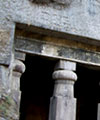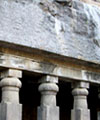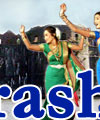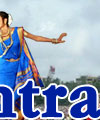| Encyclopedia of Tours and Travel to Maharashtra, featuring information on Fairs & Festivals, Wildlife, Excursion, Adventure and Weather of Maharashtra. |
 |
 |
 |
 |
 |
 |
 |
||
|
Fairs & Festival
Festival of Maharashtra Each festival comes with its own colors and cuisine. People decorate their houses and surroundings and there is an air of celebration. The festival time is surely a must visit time in India. There are many festivals celebrated with much enthusiasm and spirit. Each festival signal the passing of old and beginning of new, and this in most cases is signifies the victory of good over evil. Each festival has its mark is always felt in the daily lives of the people in India, specially in rural India [ Buddha Purnima | Dussehra And Diwali | Ganesh Chaturthi | Gokul Ashtami | Gudhi Padwa | Holi | Mahavir Jayanti | Makar Sankranti | Nag Panchami | Narali Poornima | Raksha Bandhan | Festivals Organized by MTDC ] Buddha
Purnima .On this day they wear only white clothes. They gather in their viharas for worship and give alms to monks. Many spend their entire day at the vihara listening to discourses on the life and teaching of the Buddha or invite monks to their homes to speak to them. They reaffirm their faith in the five principles (Panch Sheel) - not to take life, not to steal, not to die, not to absorb liquor or other intoxicants and not to commit sin. On Buddha Purnima Buddhists avoid from eating meat and eat kheer which they share with the poor. They set up stalls in public places, which provide clean drinking water. Their special forms of charity include kindness to animals: they buy caged birds and set them free and pay butchers to let go animals meant for slaughter. Just as in some homes paper lanterns are hung on Diwali, on Buddha Purnima Buddhists make Vaisakh Vakats out of bamboo, garland them with starts and decorate their houses with them. Some people also wrap the walls of their homes with paper or cloth depicting incidents from the Jataka tales, which are based on incarnations of the Buddha prior to his birth as Prince Gautama. Dussehra
And Diwali Diwali, which is the festival of lights, marks the end of one commercial year and the beginning of another. Streets are illuminated with rows of clay lamps and homes are decorated with rangoli (coloured powder designs) and aakash kandils (decorative lanterns of different shapes and sizes). A unique Maharashtrian touch is seen in the akash kandeels or lanterns that are hung outside homes. People rise at dawn, massage their bodies with " utanh " a special type of scented oil and take a holy bath. Diwali is celebrated with new clothes, spectacular firecrackers and a variety of sweets in the company of family and friends. Dhanatrayodashi; Narakchaturdashi, Amavasya (Laxmi poojan), Balipratipada and Yamadvitiya (Bhaubeej) are the five days, which comprise Diwali, and each day has a peculiar religious significance. Bhaubij, the last day of Diwali, is similar to Raksha Bandan and deals with the relationship between brother and sister. Ganesh
Chaturthi This ten-day festival begins with the placement of the deity, who is then worshipped daily till the immersion on the final day. Small Ganesh idols are installed in homes. Idols can tower 10m high and weigh several tones. On the tenth day, winding processions fill the streets and with the accompaniment of drumbeats and music the image of Ganesh is immersed in the water. Devotees chant 'Ganapati Bappa Morya' which means Ganesh, Daddy, please come back soon next year. The Visarjan (immersion) Processions and Ceremony The festival ends with the ceremony of immersion of the idols in the sea or rivers and wells. This ceremony which is called Ganesha-Visarjan which means immersion of Ganesha is as popular as the festival proper. During the immersion ceremony huge crowds move in a procession carrying idols of Ganesha towards the places of immersion. These processions which take place with great noisy display, begins in the afternoon and continue till the late hours of the night. Although this festival is observed in all parts of the country, it is celebrated with maximum passion in Maharashtra where it is celebrated both publicly and privately. Apart from the small idols of Ganesha that are installed in various houses, there are also many public celebrations called Sarvajanik Ganeshotsava. Lokmanya Tilak started the Public Celebrations of Ganesh-Chaturthi. In these public celebrations huge images of Ganesha ranging from 10 feet to 40 feet are installed and along with the daily prayers and hymns, there are entertainment programs which are a major attraction. Till the turn of the last century, this festival was celebrated only in homes and temples. But during the struggle for independence against British rule, Lokmanya Tilak gave it the form of a public festival. Tilak did this so as to cleverly broadcast his political message of freedom for India. Carried out in the form of a religious activity, it was difficult for the British Administration to curb it. But the festival once having acquired a public form for a political purpose, retained that form even after the political purpose did not exist. Hence even today in independent India Ganeshotsava is celebrated both publicly and privately. Gokul
Ashtami The Ceremony of Dahi-Handi: Gudhi
Padwa The festival of Holi is celebrated in March, which are winter harvest and the coming of spring. Holis or bonfires are lit in the night and people gather to worship the fire-god, which is believed to burn away, all evil. People throw colored water over each other and have great fun on this occasion. This is an important festival celebrated all over north India and in several places in the South of India. Holi is celebrated with great enthusiasm in Maharashtra.
Mahavir
Jayanti This religious event is largely observed by the Jains, by visiting sacred sites and worshipping the Teerthankars. The event holds special significance in Gujarat and Rajasthan, due to the ancient shrines at Girnar and Palitana in Gujarat. Mahavira Jayanti is also celebrated at Parasnath temple in Calcutta and at Pawapuri in Bihar. Makar
Sankranti The Indo Gangetic plain begins this day with taking dips in the Ganga and offering water to the Sun god. The dip is said to purify the self and bestow punya. Special puja is offered as a thanksgiving for good harvest. According to folklore, girls who take the holy dip get handsome husbands and boys get beautiful brides. Til and rice are two important ingredients of this festival. In the rice-eating belt of Bihar and eastern Uttar Pradesh, people have a special rice-centric meal on this day. Also known as Gangasagar Mela, on this day, people come from all over India for a ceremonial cleansing in the river Hooghly, near Calcutta. In Maharashtra, when two persons greet each other on this festive day, they exchange a few grains of multi-coloured sugar and fried til mixed with molasses and say "til gud ghya, god god bola" (from this time on let there be only friendship and good thoughts between us). The sky is ablaze with colorful kites in this season. Nag
Panchami Narali
Poornima Raksha
Bandhan Festivals
Organized by MTDC The Elephanta Festival The Elephanta caves are a showcase of legends created around Lord Shiva, beautifully presented here in all his splendour in the rock cave temples. Every year, renowned dancers and musicians perform outside the caves, beneath a star-studded sky, to a select and appreciative audience. Special launch services and catering arrangements are provided for visitors. The Ellora Festival near Aurangabad Since they failed to return by dawn, they were turned to stone - in the magnificent monolith called Ellora, the heavenly abode of the Gods on earth. MTDC organises the Ellora Festival here in December, inviting in renowned artistes who display their virtuosity in music and dance. Surrounded by 1,400-year old caves and rock carvings, artistes perform in this magnificent ambience to enchant the gods, goddesses and human lovers of art. The Kailas temple, sculptured out of one huge rock, is one of the most beautiful backdrops for an event such as this. Pune Festival Originally conceived as a localised cultural event, the Pune Festival has, over the years, gained national and international stature and evolved into one of India's landmark cultural happenings. It is one of the few festivals that has been consistently and actively promoted abroad by the government of India, as a major tourist attraction. Some of the country's internationally renowned artistes have gathered at Pune, and regarded it as a privilege to be invited to perform at the festival. While it has provided a unique platform for exponents of classical music and dance it has, keeping pace with changing times, also helped to promote modern trends in the performing arts, notably the dramatic arts and the traditional art of rangoli. A rare treat, the week-long Pune Festival provides a feast of entertainment for visitors who can participate and revel in traditional and modern sports events, shop for exquisite textiles and handicrafts, relish the delectable cuisine and rejoice in the colourful customs of Maharashtra. The Banganga Festival Centuries later, the Shilahara kings built a large and beautiful tank in stone, to store the water of the Banganga. Settlers through the ages built numerous, beautifully sculpted temples to various deities around the tank. Every year, in January, a cultural extravaganza is organised at Banganga, where top artistes from around the country perform live classical music concerts. Cultural enthusiasts attend the festival and feast the soul as well as the mind as the sun sets. Kalidas Festival Background: The Festival endeavors to bring back memories of the golden period of the Vidarbha region. It was in here that Mahakavi Kalidas had penned some of his greatest literary works, Kumaarasambhava, Meghaduuta, Ritusamhaara, etc. Organized by: The Kalidas festival is organized in association with the District Collectorate Office of Nagpur, the Kalidas Festival will feature some of the greatest exponents of music, dance and drama from all over the country. Objective: The Kalidas festival is held to showcase Nagpur, the Orange City, and Maharashtra's second capital. This will in turn familiarize the masses about the wildlife and other scenic places in and around Nagpur. Popularizing the entire Vidarbha region is also another objective of the festival. Mumbai Festival Objective: Elephanta is a renowned World Heritage site, and the festival aims to introduce, promote and popularize the beauty and grandeur of this monument to tourists all over the world. The Elephanta Festival is a tribute to the country's great art and musical legacy.
|
||||||||||
|
||||||||||
|
||||||||||
|---|---|---|---|---|---|---|---|---|---|---|